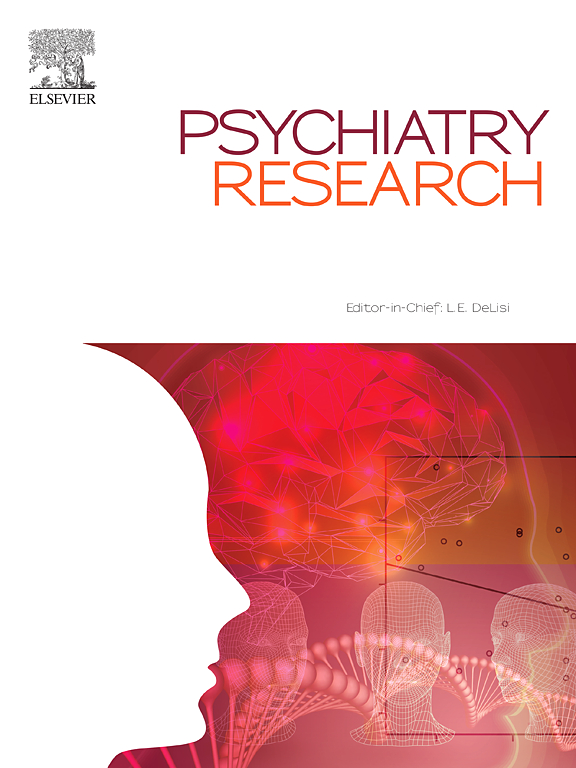Attenuated symptoms are associated with connectedness and emotional expression in narratives based on emotional pictures in a Brazilian clinical high-risk cohort
IF 4.2
2区 医学
Q1 PSYCHIATRY
引用次数: 0
Abstract
Natural language processing tools have been applied to identify symptoms through the analysis of narratives. Here we use this strategy to map attenuated symptoms when applied to prodromal stages of psychosis. We assessed narratives in a population-based prodromal screen-positive Brazilian cohort of individuals confirmed through structured interview as at clinical high-risk for psychosis (CHR) (N = 42) or as controls (N = 29) to identify language markers predictive of transition to diagnosis or remission. Participants were identified by screening >4500 individuals with the Prodromal Questionnaire–Brief and the Perceptual and Cognitive aberrations scale, followed by the Structured Interview for Psychosis-Risk Syndromes. After 2.5 years of follow-up, 23 CHR individuals were found to have transitioned to mood and anxiety disorders and 4 to psychosis. We assessed word-recurrence graph connectedness and emotional content in baseline narratives elicited with affective pictures, finding CHR markers and associations with mood symptoms. Specifically, greater recurrence (vs. randomness) in reciprocal connectedness was associated with dysphoric mood (ρ=0.64), social anhedonia (ρ=0.56), and perseveration (ρ=0.53), suggesting these may be related to rumination related to depression in individuals with psychosis risk. Language markers combined with years of education explained 58 %, 57 %, and 44 % of dysphoric mood, social anhedonia, and perseveration severity variance, respectively.
求助全文
约1分钟内获得全文
求助全文
来源期刊

Psychiatry Research
医学-精神病学
CiteScore
17.40
自引率
1.80%
发文量
527
审稿时长
57 days
期刊介绍:
Psychiatry Research offers swift publication of comprehensive research reports and reviews within the field of psychiatry.
The scope of the journal encompasses:
Biochemical, physiological, neuroanatomic, genetic, neurocognitive, and psychosocial determinants of psychiatric disorders.
Diagnostic assessments of psychiatric disorders.
Evaluations that pursue hypotheses about the cause or causes of psychiatric diseases.
Evaluations of pharmacologic and non-pharmacologic psychiatric treatments.
Basic neuroscience studies related to animal or neurochemical models for psychiatric disorders.
Methodological advances, such as instrumentation, clinical scales, and assays directly applicable to psychiatric research.
 求助内容:
求助内容: 应助结果提醒方式:
应助结果提醒方式:


